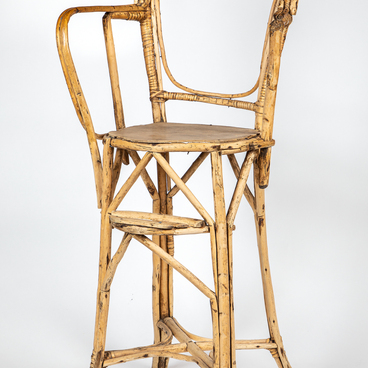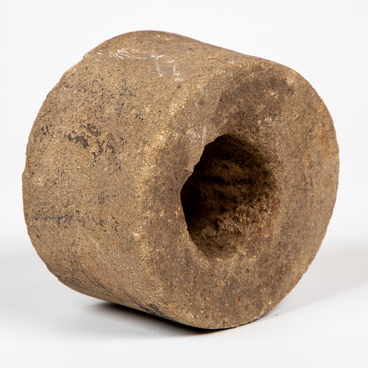The collection of the Sheltozero Veps Ethnographic Museum named after Rurik Petrovich Lonin features a measure (kaludim) made by Pyotr Nikolaevich Martynov, a Great Patriotic War veteran, a resident of the village of Sheltozero. A measure, that is, a needle for knitting fishing nets, is necessary for convenience and high-quality work. It helps to adjust the distance between nodes, ensuring the same net thickness and uniform mesh size. When knitting without a needle, the risk of getting deformations, errors and unevenness of the net increases significantly.
Since ancient times, fishing has been one of the main occupations of the Veps. They used nets, which they knitted themselves, to catch fish. From the research of the Karelian ethnographer Konstantin Kuzmich Loginov, it is known that nets were woven from linen and hemp threads using needle shuttles (kä bu), slats regulating the size of cells (k aludim), and a distaff (kož al’), which is a piece of wood with two natural knots, on top of which a flat plate was attached. Often, a box for a shuttle and a slat, a tool for winding threads (kerilaudad), was hollowed out at the base of the distaff. When weaving a net, the meshes were first made across the width of the future network, and then, row by row, the meshes were knitted for the entire length of the network. The finished net was wound around the distaff (kozal).


